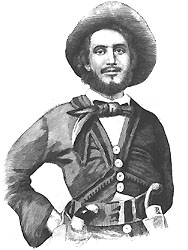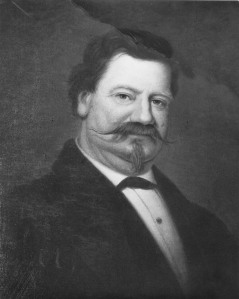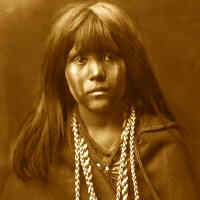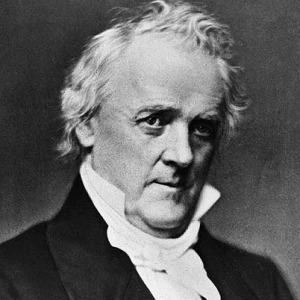Books: “The Last Camel Charge”
May 22, 2012
Samuel Bishop wanted to cross the Colorado River. Several hundred Mojave warriors objected. The factor that decided the argument: camels.
Forrest B. Johnson tells the story in his history “The Last Camel Charge.” It was April 1859, and Bishop’s friend and business partner — Edward “Ned” Beale — was leading a company of workers building a wagon trail between Arkansas and Los Angeles. The plan was for Bishop and a group of men from his ranch to rendezvous with Beale at the river and deliver supplies. But Bishop found his way blocked by Mojaves, whose people had lived in the region for a great many years. The Mojaves repelled Bishop’s first attempt to cross from California to the Arizona territory. After thinking things over, he hid the supplies, sent most of his men, wagons, and animals back to the ranch, leaving himself with 20 armed young men and 20 camels.
Camels? Six dozen of them had been imported from North Africa by the U.S. Army in an experiment championed by Jefferson Davis when he was a member of Congress and, during the administration of James Buchanan, secretary of war. The object was to determine if camels would be more serviceable than horses and mules in the punishing conditions in the American Southwest.

EDWARD BEALE
This experiment was carried on both by the Army and by civilians — namely Beale and Bishop. For the most part, it demonstrated exactly what its proponents expected. Camels could carry hundreds of pounds in excruciating heat without showing signs of fatigue. They would eat mesquite and cactus and almost any other vegetation that crossed their paths, whereas mules and horses required some form of grass. And, of course, camels could go for days without drinking, whereas desert travelers relying on horses and mules were frequently obliged to leave the trail and search for water to keep the animals alive.
Bishop had borrowed the camels from the Army. Now, although he was leading a troupe of civilians, he put them to military use. As he approached the river, he found an estimated 500 Mojave assembled there to deny him a crossing. He assembled his men, mounted on camels in four rows of five each. They galloped — likely at 40 miles per hour — directly into, and through, the ranks of the Mojave. Bishop crossed the river and didn’t lose a man.
In spite of all the evidence that camels were more suited than other animals to travel in the deserts of the Southwest, the experiment didn’t last very long after Bishop’s charge. There was a complex of reasons for that, not the least of which was the outbreak of the Civil War in 1860. Among other effects of the war was the departure of Jefferson Davis, camel proponent par excellence, from the federal government. Davis, of course, took up the secession cause and became president of the Confederacy.
In spite of the title of this book, camels aren’t the only subject Johnson covers.
The writer places the camels in the wild milieu that was the American West in those days. For example, he reports extensively on the conflict between the Mormons who had migrated to the Utah Territory to escape from the turmoil they had become embroiled in further east. When they were settling in Utah, they wanted to live on their own terms, and that brought them into conflict with the national government. At one point, while the Beale expeditions and the camel experiment were going on, President Buchanan, perhaps hoping to distract attention from the growing crisis over expansion of slavery into the western territories, declared the Mormons in rebellion against the United States and ordered the Army to deal with them— something, fortunately, that became unnecessary.
The writer also gives vivid accounts of the rigors encountered by folks traveling across country — the weather, the terrain, the hostile and violent people, not all of them natives.
I am troubled, for example, by the tags on Lipton tea bags. They’re flimsy and problematic. The design is ingenious enough. The tab is part of the envelope in which each tea bag nestles. In this respect, Lipton has it all over most brands, whose tea bags lie naked in the box. The envelope is perforated so that the user can detach the part that serves as the tag, but the envelope is made of such thin paper that the staple doesn’t grip the string very well, and as often as not the tag slips off. And that means that the whole string often winds up in the cup when the water is poured.
Most other brands — Wegmans and Twinnings, for instance — while eschewing the envelope, make the tags out of sturdier stuff.
 It has occurred to me to call Lipton’s 800 number about this, but I had such an unsatisfying experience about a decade ago when I called Nabisco to complain about the way graham crackers are wrapped that I don’t have the heart to try it again.
It has occurred to me to call Lipton’s 800 number about this, but I had such an unsatisfying experience about a decade ago when I called Nabisco to complain about the way graham crackers are wrapped that I don’t have the heart to try it again.
There are two reasons why I don’t just drink another brand of tea. One is that Lipton tea is the only kind I like — at least, as compared to other ones that I have tried. Some people (you know who you are) sniff at this, implying that there is something pedestrian about Lipton and, therefore, about me, but that doesn’t move me. I have, to borrow a phrase from Jefferson Davis, “the pride of having no pride.”
 The second reason I don’t switch brands is loyalty — not so much to the brand as to the salesman. When I was a kid, I was a devoted fan of Arthur Godfrey, who was a radio and television mogul back in the Bronze Age. Lipton was one of his sponsors and probably the one the public most associated with him. He pitched the tea and Lipton’s packaged soup. In those days before the highly produced commercials we see now, the host of a show often was the one who sold the products. Godfrey used to kid the sponsors; he might have been the first one who dared to do it. When he did his spiel for Lipton’s chicken soup, he used to assure the audience that a chicken had at least walked through the concoction.
The second reason I don’t switch brands is loyalty — not so much to the brand as to the salesman. When I was a kid, I was a devoted fan of Arthur Godfrey, who was a radio and television mogul back in the Bronze Age. Lipton was one of his sponsors and probably the one the public most associated with him. He pitched the tea and Lipton’s packaged soup. In those days before the highly produced commercials we see now, the host of a show often was the one who sold the products. Godfrey used to kid the sponsors; he might have been the first one who dared to do it. When he did his spiel for Lipton’s chicken soup, he used to assure the audience that a chicken had at least walked through the concoction.
Godfrey was troublesome. He was talented and bold as a showman, but he also was kind of full of himself, and many people my age and older might remember him best for having fired Julius La Rosa and several other regular members of his variety show cast — without warning, on live television.
 Nobody’s perfect. I made a commitment to Arthur Godfrey that I would drink Lipton tea and no other, and I have been more loyal to him than he was to Julie La Rosa.
Nobody’s perfect. I made a commitment to Arthur Godfrey that I would drink Lipton tea and no other, and I have been more loyal to him than he was to Julie La Rosa.
Besides my one-sided deal with Godfrey, I might as well mention that I’m not happy when I don’t find a prominent portrait of Sir Thomas Lipton on the box of tea. Lipton, who founded the brand, was one of the great self-made businessmen of the latter 19th and early 20th centuries. I identify with him because he was a grocer, as were my father and grandfather. Of course, we had one store and Lipton eventually had about 300.
When Lipton got into the tea trade, he broke the established wholesaling patterns so that he could sell the product at low prices to the working poor. Lipton tea boxes used to feature a large picture of Thomas Lipton with a tea cup in his hand and a yachting cap on his head – an image that has been relegated to a tiny logo. Lipton was a yachting enthusiast and tried five times with five different yachts to win the Americas Cup. What he finally won was a special trophy honoring him as the “best of all losers.”
Lipton also did a lot to assist medical volunteers in Europe during World War I, including putting his yachts at the disposal of organizations transporting medical personnel and supplies and traveling himself to Serbia to show his support for doctors, nurses, and soldiers at the height of a typhus epidemic. Twinnings? I don’t think so.
Books: “Civil War Wives”
July 6, 2010
When we learn about history, we learn mostly about men. This is something on the question of time. The curriculum in grade school and high school – and even in college for those who aren’t history majors – skims the surface. With respect to many epochs, that means leaving women out of the story, precisely because women were precluded from participating in what went on on the surface. Oh, we got an occasional glimpse of the other half of the population: Cleopatra, Catherine the Great, Queen Victoria, Betsy Ross, Harriet Beecher Stowe, Madame Curie, but the story overall was badly skewed.
This phenomenon is addressed in “Civil War Wives” by Carol Berkin, a book published last year. I read this book because I got it as a Father’s Day gift from one of my daughters — all of whom, by the way, are special women in their own rights, and that has a lot to do with their mother.
Carol Berkin writes about three women who lived through the Civil War period and were directly affected by the war itself and the events and conditions surrounding it. These women were Angelina Grimke Weld, an abolitionist and feminist; Varina Howell Davis, who was married to Confederate President Jefferson Davis; and Julia Dent Grant, who was married to Ulysses S. Grant, Civil War general and postwar president.
I had some knowledge of Varina Davis and Julia Grant before I read this book, but I had not heard of Angelina Grimke Weld, who was an independent thinker from childhood. She was the daughter of a slave-holding plantation owner and judge in South Carolina, but she never accepted the precepts by which her parents lived — including human slavery, self-indulgence, and the notion that women should be happily subordinate to men.
Berkin recounts the process through which Angelina and her sister Sarah moved north and engaged in a prolific campaign against slavery and for women’s rights. Angelina Grimke in the 1830s was arguing for full citizenship for women — up to and including election to the presidency of the United States. (How impatient it must make her, wherever she reposes, to know that the nation still hasn’t chosen a female president.) She was making that argument at a time in which her public appearances, usually with Sarah, were regarded by many people as inappropriate for a woman – particularly when the sisters spoke to audiences of mixed gender and even of mixed race. Angelina married the abolitionist Theodore Weld, and Berkin reports that abolitionist organizations leaned on the husband — who bent a little — to discourage his wife from distracting from the antislavery message by arguing for women’s rights.
When Varina Davis first became engaged to Jefferson Davis, she was 17 years old and he was about twice her age. He had been married many years before, but his first wife died shortly after the wedding, and he may never have fully recovered from that loss. Varina Davis was loyal to her husband while they and their larger family were buffeted by illness, death, financial crises, infidelity, and the many shocks associated with the Civil War. However, theirs was hardly an ideal marriage. Varina was also the daughter of a southern slaveholder, but she was an independent thinker and her thoughts were not always in concert with those of her family or her husband. Jefferson Davis did not admire this trait in his wife, and he admonished her throughout their lives together about her penchant for expressing herself on public matters.
For Varina Davis, one of the most painful episodes of a life full of painful episodes must have been the imprisonment of her husband for two years at Fort Monroe in Phoebus, Virginia. She tirelessly but fruitlessly campaigned to get President Andrew Johnson to intercede on Jefferson Davis’s behalf. She persisted, however, and eventually succeeded not only in getting improved conditions for the prisoner but in getting permission to move into an apartment at the prison herself so that she could visit him regularly.
After the death of Jefferson Davis, Varina shocked southern society by moving north and associating with folks who were anathema in the former Confederacy. One of them was Julia Dent Grant, whose husband had taken compassion on Varina and intervened for the imprisoned Jefferson Davis. Varina also took up a career as a newspaper journalist for Joseph Pulitzer’s New York World.
Julia Grant was like the other two subjects of this book in that she was also the daughter of a slave-holding planter, but she was quite a different personality. She was a homely girl – and had a crossed eye to boot, but she was never allowed to think of herself as anything but a princess, thanks to a doting father. She was raised in leisure, and she celebrated that fact for the rest of her life. She did exhibit independence with respect to one, critical, point in her life. She persisted in her determination to marry Ulysses S. Grant over the objections of parents who didn’t think the soldier could provide the kind of life Julia wanted and deserved. Ulysses did leave the military after the marriage, but he was not cut out to be a businessman, and he failed repeatedly. His return to arms, of course, led to his greatest successes in life — all of them on the battlefield — and also led to his election to two terms as president, terms that were ridden with scandal, thanks to Grant’s friends and even, in one instance, his brother-in-law.
Julia Grant was spoiled, but she was not petulant, and she weathered the changes in her life brought on by marriage to both an unsuccessful businessman and to a soldier. She reveled in her role as First Lady, and got generally good reviews for her performance as the social leader of the capital. She was not well informed about public affairs, and her occasional attempts to remedy that were not encouraged by her husband, who liked to think of her more as a loving spouse than as a helpmate. One thing was certain, as Berkin emphasizes: Julia and her “Uly” were in love — as much so on the day he died of throat cancer as on the day they were engaged.
Julia Grant, as a widow, was at West Point when she learned that Varina Davis was staying nearby. Julia went to Varina’s room and introduced herself, and the two became friends. It was a suitable gesture for Julia to make, both because Varina had never forgotten the general’s help for her imprisoned husband and because Grant — once the scourge of the South — had left instructions that his casket be carried to its tomb by equal numbers of Union and Confederate generals.
Books: “Franklin Pierce”
June 13, 2010
When I was a kid, a bubble gum company came out with a line of president cards which I guess were intended as the nerd’s alternative to baseball cards. I was into baseball – including the cards – but I was also into history. Also, my Dad owned a grocery store, so I had easy access to whatever the gum companies were peddling.
I recall sitting across from my father at the kitchen table. He held the president cards, arranged in chronological order, and I would try to list them from memory. I can still hear him saying one night when I got stuck somewhere in the latter 19th century: “C’mon! What street does your Aunt Ida live on?” The answer was Garfield Place, as in James A.
It occurred to me at that young age – it was during Dwight Eisenhower’s first administration – that Franklin Pierce had the best-looking face on those cards.
Pierce is the subject of a new little biography – part of a Time Books series on the presidents. This one is written by Michael F. Holt, a history professor at the University of Virginia and an expert on the political life of the country in the years leading up to the Civil War. Sure enough, Holt points out that Pierce was not only handsome, but charming and warm hearted as well. Unfortunately, those qualities carried a lot more weight in the internal politics of Democratic New Hampshire than they did when spread out over a nation that was on the verge of committing suicide over the issue of expanding slavery into the western territories.
In fact, Pierce was nominated for the presidency in 1852 not so much because his party thought he was the Man of the Hour but because the party couldn’t muster a winning vote for any of the three leading candidates – one of whom was not Pierce. He was the original Dark Horse, as far as the presidency of the United States was concerned.
Pierce actually showed some skill in managing the foreign affairs of the country, and he directed the Gadsden Purchase, which was the last major territorial acquisition in what is now the contiguous 48 states. But the crisis of the moment had to do with whether the institution of slavery was going to migrate west along with settlers – an argument that many thought had been closed with the Compromise of 1820. Pierce’s attitude on this issue was complex. First of all, he was a strict constructionist, meaning that he didn’t believe the federal government had any right to interfere in the internal affairs of states, including slavery. Pierce was not pro-slavery per se, but he believed that as long as slavery was protected by the Constitution, the federal government had no right to intrude.
Pierce was also fiercely determined to hold the Union together, and that inspired his loathing of the abolition movement. He considered abolitionists fanatics whose shenanigans were threatening the solidarity of the nation. And so, Pierce was a New Englander who consistently supported the Southern slave-holding oligarchy.
Another error in Pierce’s thinking, Holt explains, was an attempt to unify the Democratic party – which was suffering regional and philosophical tensions – by doling out federal patronage jobs to men who represented the whole spectrum of opinion. Among other things, he appointed his friend Jefferson Davis – soon to be president of the Confederacy – as Secretary of War, a move that did not endear Pierce to northern interests that despised and feared the southern plantation establishment. Rather than unifying the party, this policy succeeded in irritating just about everybody but those who got lucrative or influential positions.
Pierce made enough mistakes that he was denied re-nomination by his own party. He was gracious in defeat, Holt reports, but he had to have been sorely disappointed. Among those who probably was not disappointed at all was the president’s wife, Jane Appleton Pierce, who had no patience with politics or life in the capital. In fact, when a rider caught up with the Pierces’ carriage to report that Pierce had been nominated for president, Jane fainted dead away. The poor woman was shy and fragile, and she and her husband endured a series of tragedies that unfortunately were not uncommon in the mid 19th century. They had three sons. Two died at very young ages and the third was killed when a railroad car in which the parents and child were riding left the track and overturned. Holt mentions that although Pierce did not approve of Abraham Lincoln’s policies, he wrote Lincoln a heartfelt note of sympathy when one of Lincoln’s sons died in the White House.
Pierce was a heavy drinker – a problem drinker, actually – during much of his life, including the years after Jane died in 1863.
An interesting aspect of Pierce’s life was his compassion for other people – the most prominent of whom may have been Nathaniel Hawthorne, whom Pierce met while a student at Bowdoin College. The men were so close that when Hawthorne sensed that he was dying he asked to spend some of his last days with Pierce. Although Hawthorne could travel only with difficulty, Pierce accommodated him and set off with him on a trip that was to be Hawthorne’s last. Pierce found the writer dead in a room at a hotel where the two men had stopped on their journey. Pierce, who was well off, included Hawthorne’s children in his own will.
Pierce is consistently ranked as one of the least effective, or “worst,” of American presidents. But life isn’t lived on historians’ templates; it is lived between the ground and the sky in specific times and places and under specific and complex conditions. Calling a man one of the “worst” in any realm might have as much to do with what we expect of him at a comfortable distance than it has to do with the choices and challenges that confronted that man in his own circumstances. When Abraham Lincoln had been murdered, an angry crowd approached Pierce’s home demanding to know why he wasn’t displaying a flag. Pierce pointed out that his father, Benjamin, had fought in the Revolution, his brothers in the War of 1812, and he himself in the Mexican War: “If the period during which I have served our state and country in various situations, commencing more than thirty-five years ago, have left the question of my devotion to the flag, the Constitution, and the Union in doubt, it is too late now to remove it.”

















